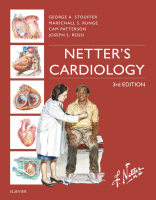Physical Address
304 North Cardinal St.
Dorchester Center, MA 02124

Myocarditis is an inflammatory process that can involve one or more components of the myocardium, including cardiomyocytes, the interstitium, and the coronary vasculature. This inflammatory process may result from infectious processes, responses to pharmacological or toxic agents, hypersensitivity reactions, or…

The World Health Organization/International Society and Federation of Cardiology Task Force on the Definition and Classification of Cardiomyopathies define cardiomyopathies as a group of diseases of the myocardium that result in cardiac dysfunction. Although cardiomyopathy may be secondary to myocardial…

Etiology and Pathophysiology The variety of disease states that may result in a restrictive cardiomyopathic process are summarized in Box 31.1 . Myocardial fibrosis, myocardial infiltration by specific proteins, endomyocardial scarring, and cardiac muscle hypertrophy all may contribute to diastolic…

Etiology and Pathogenesis Approximately 700,000 individuals in the United States have hypertrophic cardiomyopathy (HCM), a monogenetic disorder that results in hypertrophy of the left ventricle (LVH) without another cardiac or systemic cause. HCM results from 1 of >1500 different mutations…

Heart failure (HF) is a complex clinical syndrome that can result from any structural or functional cardiac disorder that impairs the ability of the ventricle to fill with (HF with preserved ejection fraction; HFpEF) or eject (HF with reduced ejection…

Definitions and Epidemiology The term acute decompensated heart failure (ADHF) encompasses an array of disease processes related to inefficient cardiac function with compromised hemodynamics and/or volume status. Although ADHF has historically been treated on an inpatient basis, there are increasing…

Over the last few decades, heart failure (HF) has emerged as a true epidemic, with an estimated global prevalence of 38 million patients. HF affects 6.5 million American adults, with nearly 1 million new cases annually. HF can be due…

Basic Principles of Coronary Blood Flow Myocardial cell contraction and relaxation are aerobic processes that require oxygen. Determinants of myocardial oxygen demands include preload, afterload, heart rate, contractility, and basal metabolic rate. Other than basal metabolic rate, these are factors…

Unfortunately, presentation with cardiac arrest or sudden cardiac death is a common manifestation of congenital coronary anomalies. This clinical relevance underpins the necessity of understanding the anatomy and presentation of congenital coronary anomalies and their treatment options. The two primary…

Cardiogenic shock (CS) is characterized by hypotension and end-organ hypoperfusion as a result of low cardiac output. CS remains the most common cause of death after presentation with a myocardial infarction (MI). This clinical state occurs in up to 10%…